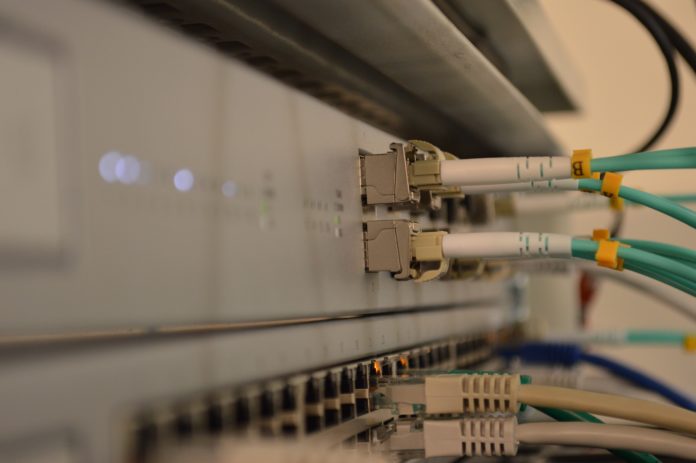

By Amanda Regnerus, EVP of Product and Services, US Signal
Today, the amount of users who access the internet each day is close to 3 billion. With that being said, how are enterprises able to keep information flowing without experiencing bottlenecks, tolerating poor performance or jeopardizing security? It’s simple: they utilize one or more variations of IP transit and IP peering.
In order to better understand IP transit and IP peering, it’s helpful to know exactly how the internet works. The internet is a connection of networks designed to link all service providers, internet service provider (ISP) networks, and hosting providers with the purpose of transporting data packets from point A to point B. IP transit and IP peering are the primary modes of transport between these networks.
IP Transit vs. IP Peering
With IP transit, one ISP pays another for the right to transit its upstream network and connect to other networks. The IP transit provider decides how traffic connects to the available routes across the internet, including those of their downstream partners, other peers, and upstream providers.
In contrast, IP peering parties only exchange data that travels through their networks and their downstream customers. Neither has visibility into the other’s upstream routes over the peering connection. With the two networks connecting directly and exchanging traffic, IP peering allows for the most optimal and efficient path.
More often than not, ISPs use IP transit in conjunction with IP peering.
What are the Benefits of IP Transit?
There are many advantages when it comes to IP transit. It is a service that is easy to implement, and after users pay for the service, the ISP handles the provider’s traffic requirements.
IP transit also provides a guaranteed service level agreement (SLA) in the event that the ISP fails to deliver within the established parameters. With a specific term contract, companies have the ability to switch ISPs, or not, when the contract expires.
IP transit provides speed, flexibility, and redundancy. Dynamic routing for ISPs using different IP transit providers can provide less exposure than a single channel, enabling immediate failover in the event of a connection going down.
Last but not least, IP transit connections are faster compared to business internet connections that rely on routers. Allowing an ISP to manage your IP transit can save time and money, compared to IP packets traveling through additional Tier 1 and Tier 2 networks.
When should I use IP Peering?
Peering consists of two networks exchanging traffic freely and for mutual benefit. IP peering reduces transit costs because the two networks exchange traffic without the use of a third party.
The best of the best will be the Tier 1 network, which is regarded as the superhighway of the internet. Since they build the infrastructure needed to connect the thoroughfares between internet providers, Tier 1 internet providers form the foundation of the global internet.
When two Tier 1 networks peer to exchange an equal amount of traffic, the reach of both networks is doubled. Network A can retrieve all the customers on Network B and vice-versa.
Public Peering vs. Private Peering
When it comes to peering, there are two methods: peering through a public internet exchange (IX) or private peering (direct).
Public peering is an agreement between two or more networks to accept each other’s packets and forward them at an Internet Exchange Point (IX or IXP). An IXP is composed of routers and switches. It’s a public connection point on the internet that serves as an on-ramp to the internet and a location for carriers to exchange traffic. Public peering is used by large and small networks to aggregate groups of peers on an efficient, cost-effective service.
Using an IX or IXP enables you to connect with other peers via the Border Gateway Protocol (BGP). This is done through one or more physical connections and optimizes the cost per peer when using multiple networks.
In order to maintain their infrastructure, IX/IXPs typically charge a port and membership fee.
Public peering’s major advantage is that traffic is kept local within an IXP, which offers a more direct route between network operators. The result is lower latency and a significant decrease in interruptions and delays.
Private peering is a direct physical connection between two or more networks that accept each other’s packets and forward them. The interchange is made at a common, private facility rather than at a public exchange point. Private peering interconnections make up most of the traffic on the internet, especially between the large networks.
Among the advantages of private peering are that it’s easy to monitor, and it’s more reliable and secure. It’s a good option for sending large volumes of traffic to a specific network, as it frees up capacity on public peering links for other traffic and peers.
What Are My Other Options? Dedicated Internet Access
Small networks or midsize companies typically opt for dedicated internet access (DIA) over IP transit. Because DIA is a private connection between a business and the Internet, there’s no competition with other subscribers for bandwidth.
Making a Decision
Cost, security and speed should be top of mind when choosing a type of internet access. At the end of the day, the best internet access type is one that meets the needs of your organization.
Prior to making a decision, assess your organization’s goals and requirements. If you’re still unsure, many IT service providers can look at your connectivity needs and lay out the best available options.



















